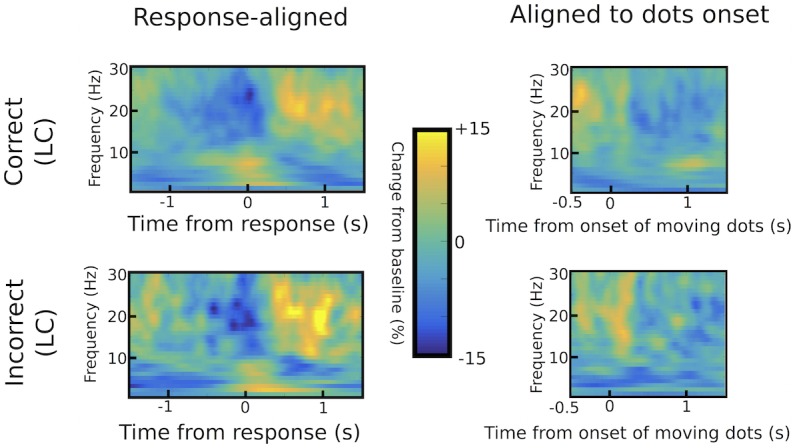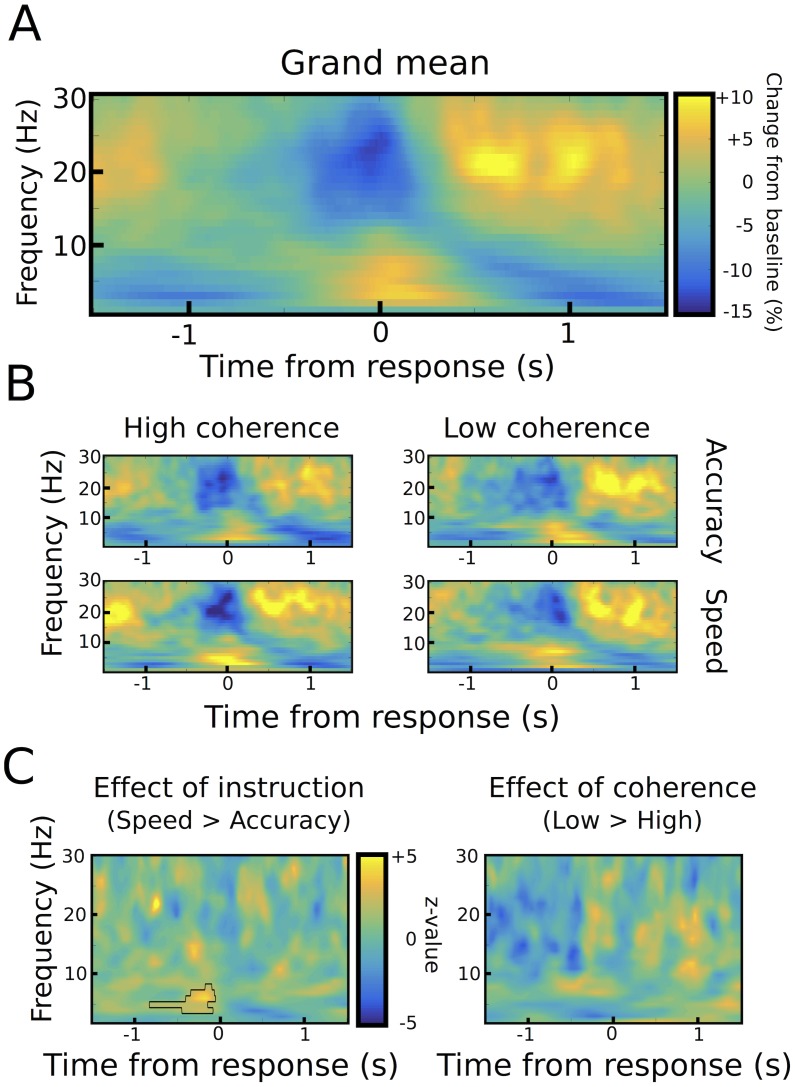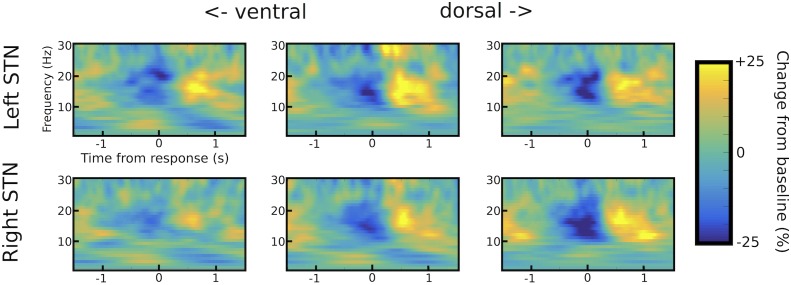Figure 3. Response-aligned STN power changes.
(A) Time frequency spectrum aligned to the onset of the motor response from −1.5 to +1.5 s averaged across conditions. (B) Spectra shown separately for the four conditions. The color map is identical to A. (C) Significant differences between conditions as revealed by cluster-based permutation tests.
Figure 3—figure supplement 1. STN channel selection.
Figure 3—figure supplement 2. Differences in STN power between correct and incorrect trials.



